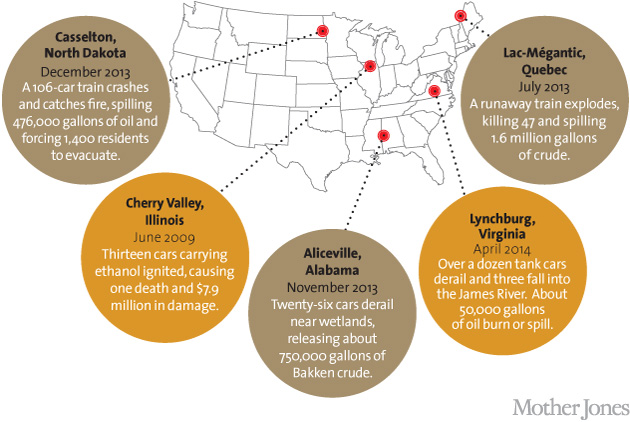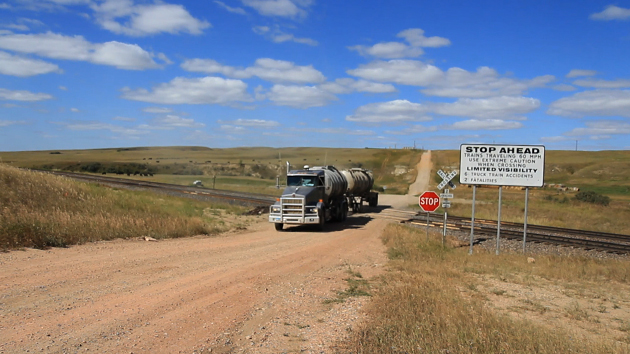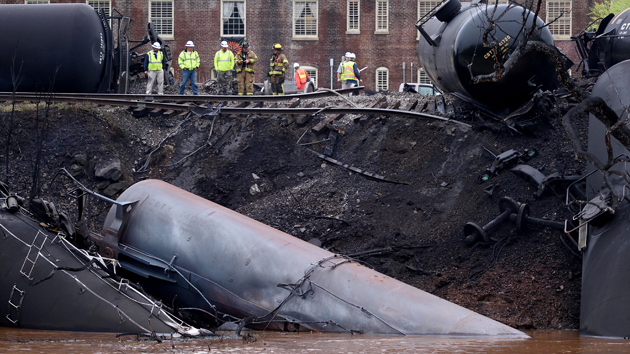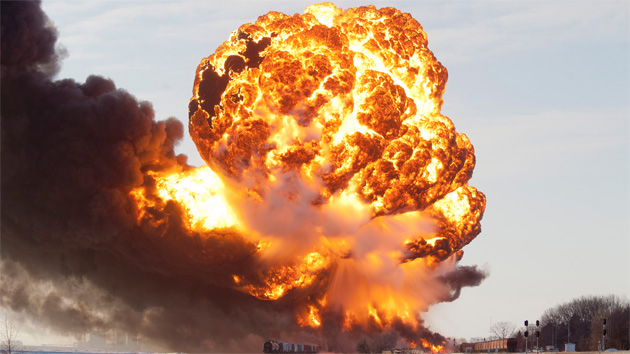Early on the morning of July 6, 2013, a runaway freight train derailed in Lac-Mégantic, Quebec, setting off a series of massive explosions and inundating the town in flaming oil. The inferno destroyed the downtown area; 47 people died.
The 72-car train had been carrying nearly 2 million gallons of crude oil from North Dakota’s Bakken fields. While the recent surge in domestic oil production has raised concerns about fracking, less attention has been paid to the billions of gallons of petroleum crisscrossing the country in “virtual pipelines” running through neighborhoods and alongside waterways. Most of this oil is being shipped in what’s been called “the Ford Pinto of rail cars”—a tank car whose safety flaws have been known for more than two decades.
Holey Roller: The DOT-111
The original DOT-111 tank car was designed in the 1960s. Its safety flaws were pointed out in the early ’90s, but more than 200,000 are still in service, with about 78,000 carrying crude oil and other flammable liquids. The DOT-111 tank car’s design flaws “create an unacceptable public risk,” Deborah Hersman, then chair of the National Transportation Safety Board, testified at a Senate hearing in April. Sen. Charles Schumer (D-N.Y.) has compared the car to “a ticking time bomb.” While the rail industry has voluntarily rolled out about 14,000 stronger tank cars, about 78,000 of the older DOT-111s remain in service. Retrofitting them would cost an estimated $1 billion.
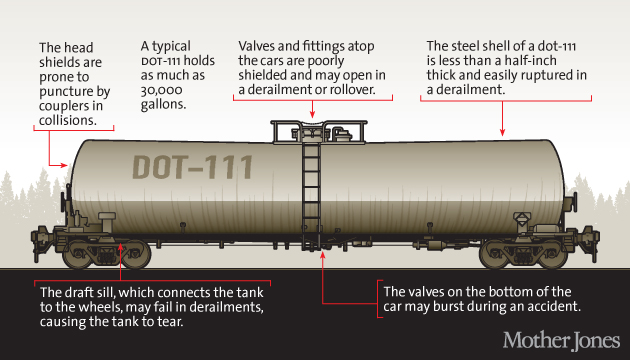
the Bakken Factor
The sudden flood of Bakken crude (currently 1 million barrels a day), which is potentially more flammable, volatile, and corrosive than traditional crude, also poses a new hazard. The violence of the Lac-Mégantic blast and other recent wrecks involving this variety of crude stunned railroads and regulators. In May, the Department of Transportation issued an emergency order requiring state crisis managers to be notified about large shipments of Bakken oil. The agency also advised railroads to stop carrying the oil in older DOT-111s, citing the increased propensity for accidents. Meanwhile, as US officials decide what to do next, Canada has ordered its railways to stop all crude shipments in the cars by 2017.
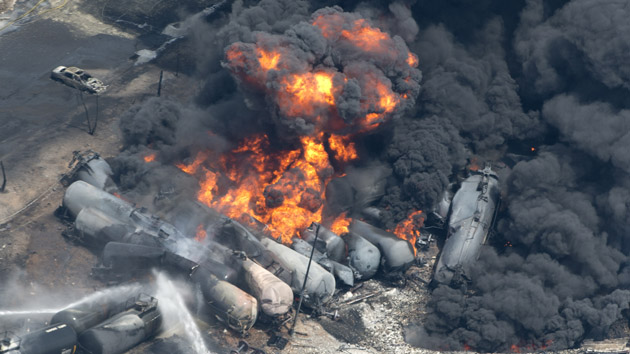
More Trains, More Spills
Trains carry more than 10 percent of all US oil, particularly from areas without major pipelines, such as the Bakken. The sudden surge of oil shipments has so clogged the rails that farmers in North Dakota complain that they can’t get fertilizer shipped in or their crops shipped out.
Not waiting for a final decision on the Keystone XL pipeline, oil companies are also building rail terminals in Canada’s tar sands region. The Association of American Railroads says that the vast majority of rail shipments arrive without incident. But more oil on the rails has also meant more spills. Trains leaked more crude in 2013 than all years since 1971 combined. (These figures don’t include the Lac-Mégantic disaster, in which 1.6 million gallons of oil spilled.)

Off the Rails: Recent DOT-111 Accidents
Watch a video of tank cars exploding in Casselton at the top of the page. Watch video of the aftermath of the recent derailment and spill in Lynchburg, Virginia, below.
